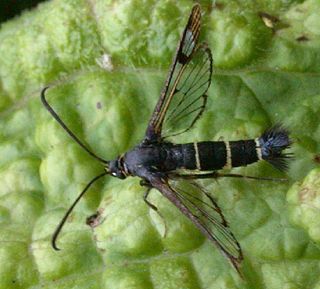
The Sesiidae or clearwing moths are a diurnal moth family in the order Lepidoptera known for their Batesian mimicry in both appearance and behaviour of various Hymenoptera.

Pyraustinae is a large subfamily of the lepidopteran family Crambidae, the crambid snout moths. It currently includes about 1,280 species Most of them tropical but some found in temperate regions including both North America and Europe.

Spilomelinae is a very species-rich subfamily of the lepidopteran family Crambidae, the crambid snout moths. With 4,135 described species in 344 genera worldwide, it is the most speciose group among pyraloids.

Crambinae is a large subfamily of the lepidopteran family Crambidae, the crambid snout moths. It currently includes over 1,800 species worldwide. The larvae are root feeders or stem borers, mostly on grasses. A few species are pests of sod grasses, maize, sugar cane, rice, and other Poaceae. The monophyly of this group is supported by the structure of the tympanal organs and the phallus attached medially to the juxta, as well as genetic analyses.
Scrobipalpula is a genus of moths in the family Gelechiidae.

Anania is a genus of moths of the family Crambidae described by Jacob Hübner in 1823.

Udea is a genus of snout moths in the subfamily Spilomelinae of the family Crambidae. The genus was erected by Achille Guenée in 1845. The currently known 216 species are present on all continents except Antarctica. About 41 species are native to Hawaii.
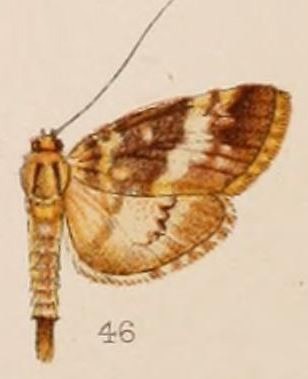
Lygropia is a genus of snout moths in the subfamily Spilomelinae of the family Crambidae. It currently comprises 66 species, which are mostly found in the tropical and subtropical regions of the Americas, Africa and Asia, but not in Australia.
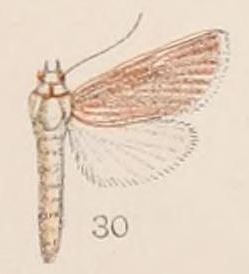
Patissa is a genus of moths of the family Crambidae erected by Frederic Moore in 1886.

Placosaris is a genus of snout moths in the subfamily Pyraustinae of the family Crambidae. It is placed in the tribe Pyraustini.

Syllepte is a genus of moths in the family Crambidae.
Anacrusis is a genus of moths belonging to the subfamily Tortricinae of the family Tortricidae.

Caloptilia is a genus of moths in the family Gracillariidae.
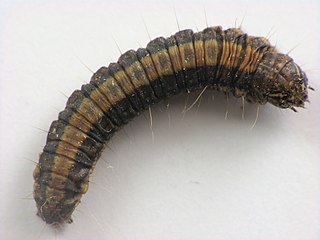
The Epipaschiinae are a subfamily of snout moths. More than 720 species are known today, which are found mainly in the tropics and subtropics. Some occur in temperate regions, but the subfamily is apparently completely absent from Europe, at least as native species. A few Epipaschiinae are crop pests that may occasionally become economically significant.

The Anerastiini are a tribe of moths of the family Pyralidae.

Midilinae is a subfamily of the lepidopteran family Crambidae. It was described by Eugene G. Munroe in 1958. The 11 genera altogether comprise 59 species, with the majority of them occurring in the Neotropical realm, whereas the species of the genera Dolichobela and Styphlolepis are found in Australia.
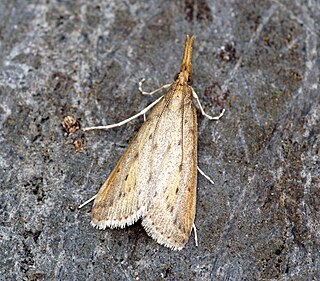
Schoenobiinae is a subfamily of the lepidopteran family Crambidae. The subfamily was described by Philogène Auguste Joseph Duponchel in 1846.

Margaroniini is a tribe of the species-rich subfamily Spilomelinae in the pyraloid moth family Crambidae. The tribe was erected by Charles Swinhoe and Everard Charles Cotes in 1889, originally as family Margaronidae.

Diptychophora galvani is a species of moth in the family Crambidae. It measures about one centimeter in wingspan and is easily distinguished from all closely related species by the color pattern of its forewings. These are orange at their base and tip with a large intermediate gray patch, a pattern not found in any other species of Diptychophora. The female has grayish hindwings, while they are entirely white in the male. The genitalia of both male and female are also quite different from other members of this genus. The biology of the species remains completely unknown, including the host plant of the larval stage, although some species of the tribe Diptychophorini are known to feed on mosses.














